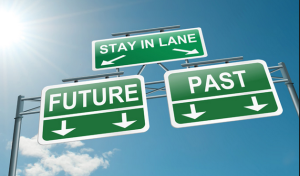 Today we face unprecedented change; organizations are being hit on multiple sides, often by a bewildering set of forces to make them feel the immediate need is to go back into themselves, to be more inward than looking out and being open to facing the future. There is this feeling today of being battered. Organizations are feeling the full force of the winds of business and global change.
Today we face unprecedented change; organizations are being hit on multiple sides, often by a bewildering set of forces to make them feel the immediate need is to go back into themselves, to be more inward than looking out and being open to facing the future. There is this feeling today of being battered. Organizations are feeling the full force of the winds of business and global change.
Stopping, reflecting and then moving on.
Organizations are grappling with how to navigate through an unprecedented set of early 21st century challenges. How can they adjust to a more open and transparent world, a more fluid and adaptive one, that needs to be replacing the one we have been operating within all of the last century? One that seems to work no more as its very foundations seem to be crumbling. Organizations are in a period of relearning and understanding these ‘new’ forces at work.
Those of us on the outside – those investors, stakeholders, non-profit organizations, researchers and students of organization dynamics – want to force this greater openness, to understand more of what is actually really going on inside our organizations, institutions and governments by the seeking out of transparency for greater understanding through constant ongoing engagements.
Organizations must resist being drawn in and simply press on with their outward engagements
Organizations certainly are at a defining crossroads, to go inward would be disastrous. They need to be outwardly facing and more forward-looking, more open on explaining their business models and strategic designs by discussing these more openly in risks and opportunities will draw people in, and is that unhealthy, I don’t think so?
A real opportunity is for organizations to grasp the greater knowledge that lies outside, by listening and absorbing is becoming a watershed moment for change, that we are in the middle of trying to understand. We are grappling with what technology is providing us in big data and all these dialogues of information flowing in.
I don’t think we can just ‘manage it’, organizations have to become highly adaptive, swift and nimble to seize what it is signalling to turn it into our economic or knowledge gain, time and time again. This is radically challenging the organizations command and control structures. At present, everything is becoming adaptive.
Much is not prescriptive, we are in a period of invention
Engaging in consistent conversations with customers, with stakeholders, with lobbyists or protectionists, looking to push for faster change is highly challenging and full of mixed signals for organizations, ones that are built on order, hierarchy and chains of command.
Yet being open is a far better place to stand and defend, to listen and respond, to adapt and learn how to change. Stakeholders value dialogue and honesty far more today, there is far less acceptance of denial and avoidance
This new more open organizational form, being sought outs through new networking, gathering new knowledge, absorbing this and then transform it into new combinations that all become our new innovation source, lies in our abilities to translate all these different signals arriving into our organizations.
The integration and interconnectedness that defines our time
Christine Lagarde, the Managing Director of the International Monetary Fund, talks of the “breakneck pattern of integration and interconnectedness that defines our time, bringing with it tensions in economic sustainability and global interconnections”. What is driving the new way of thinking and behaviour needed in the ‘hyper-connected’ world requires new mechanisms need to be found to address challenges that can no longer be addressed in the isolation of one institution or jurisdiction.(source:www.theiirc.org)”
Today, organizations are forced to embrace different realities, caused by recent economic and political events leaving a growing sense of unease. Technology, social exchanges, a more global interconnected economy make everything seem either immediate or at an increasing distance, out of our hands. The reflecting part, the time to consider has been eroded, we have lost the middle ground to muse and ponder. Today we seem to simply ‘react’ or ignore and simply move on, because of this we starve our thinking and often loose context and meaning.
Making sense of our world
The art of sense making is how people make sense of the world in all its complexity and seemingly consistent uncertainty in order to make (better) decisions. We are presently seeking out plausible explanations to much that seems complex at so many different levels of society.
The problem seems to me, it is not unfolding in the way we have been ‘conditioned’ to understand it. The time-space of how we are moving from the past, through the present into the future is hard for organizations and us as individuals to understand. Equally as the speed, scale and complexity seemingly keeps growing it threatens to overwhelms us. We need to master ‘sense- making’ to try and put these into a new context.
revised 1st March 2014
2 thoughts on “Facing the future or staying locked in the slow lane of the past?”
Comments are closed.